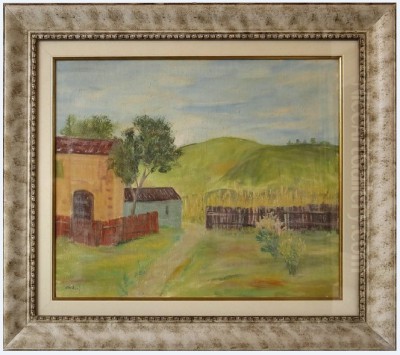
Angelo Del Bon (1898-1952) stands as a significant figure in twentieth-century Italian art, particularly within the rich artistic landscape of Lombardy. Born in Milan and deeply connected to the region throughout his life, Del Bon carved a unique path, creating works celebrated for their lyrical sensitivity, mastery of light, and intimate connection to nature. Primarily known as a painter of landscapes and still lifes, his art offers a bridge between the lingering influences of the nineteenth century and the evolving artistic currents of his own time.
Formative Years and the Brera Influence
Angelo Del Bon's artistic journey began in Milan, the city of his birth in 1898. His formal training took place at the prestigious Accademia di Belle Arti di Brera, a cornerstone of artistic education in Italy. During his time at the Brera, he would have been immersed in an environment shaped by academic traditions but also touched by the revolutionary changes that had swept through European art in the preceding decades. Milan, as a major cultural and industrial hub, was a place where various artistic ideas converged.
The education at Brera likely provided Del Bon with a solid foundation in drawing, composition, and oil painting techniques. However, his artistic temperament seemed inclined towards a more personal and less rigidly academic form of expression. Even early on, his sensibilities resonated more with certain nineteenth-century Lombard masters than with the prevailing official tastes of the academy. This inclination would become a defining characteristic of his mature style.
The Essence of Del Bon's Style: Light, Line, and Emotion
Del Bon's paintings are immediately recognizable for their distinctive handling of light and line. He possessed a remarkable ability to capture the nuances of natural light, rendering it with a clarity and luminosity that imbues his scenes with a palpable atmosphere. Whether depicting the sun-drenched hills of Lombardy, the reflective surfaces of Lake Como, or the delicate petals of flowers in a vase, light is never merely illustrative in his work; it is an active element that shapes form, defines space, and evokes mood.
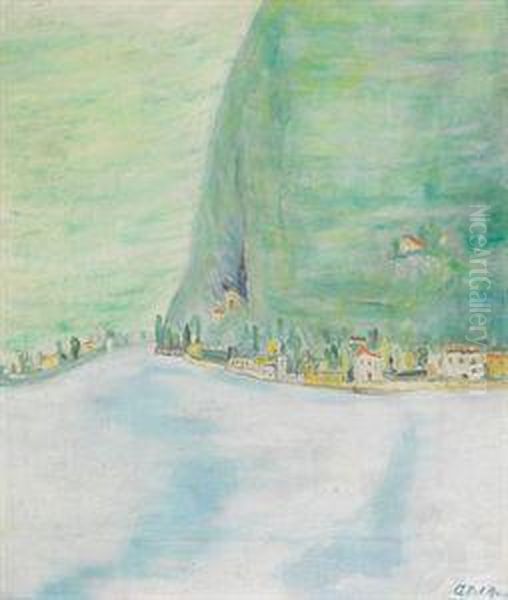
His approach to line and form was often described as "unconventional" or "informal." This doesn't imply a lack of skill, but rather a departure from strict academic rendering. His brushwork could be fluid and expressive, defining shapes with an economy of means that prioritized emotional resonance over photographic detail. This freedom in his linework contributes to the sense of vitality noted by critics, a feeling that his landscapes and still lifes are not just observed, but deeply felt.
Color played a crucial role in Del Bon's art. His palette could range from subtle, almost ethereal tones in his snowy landscapes or misty lake views, to vibrant bursts of color in his floral still lifes. He demonstrated a keen sensitivity to color relationships and their power to convey emotion and capture the specific quality of light in a given moment. His mastery of oil paint allowed him to explore textures and transparencies, further enhancing the atmospheric depth of his compositions.
Echoes of the Masters: Key Influences
A defining aspect of Angelo Del Bon's artistic identity was his profound admiration for certain masters of the nineteenth century, particularly those associated with the Lombard region and the Scapigliatura movement. The provided information explicitly mentions his appreciation for Daniele Ranzoni (1843-1889), Tranquillo Cremona (1837-1878) – often linked with the nickname "Piccio," though this more accurately refers to Giovanni Carnovali, "Il Piccio" (1804-1873), another Lombard painter whose atmospheric style could also be seen as an influence – and Emilio Gola (1851-1923).
The Scapigliatura movement, flourishing in Milan during the latter half of the nineteenth century, reacted against academic conservatism, favouring instead a style characterized by sfumato (smoky, blurred outlines), atmospheric effects, and a focus on capturing fleeting moments and psychological states. Ranzoni and Cremona were leading figures, known for their vaporous brushwork and intimate portraits. Del Bon seems to have absorbed their emphasis on light and atmosphere, translating it into his own landscape and still life practice.
Emilio Gola, a slightly later figure associated with Lombard Naturalism, was renowned for his evocative landscapes and seascapes, often painted with vigorous brushwork and a keen sense of place. Del Bon's affinity for Gola likely stemmed from a shared dedication to depicting the Lombard countryside and a similar sensitivity to atmospheric conditions. These influences – the anti-academic spirit and atmospheric focus of the Scapigliatura, combined with Gola's naturalism – provided Del Bon with a rich artistic heritage upon which to build his own unique vision. He managed to integrate these influences without sacrificing his personal style, using their approaches to light and line to "bridge the gap between reality and the artist's dream."
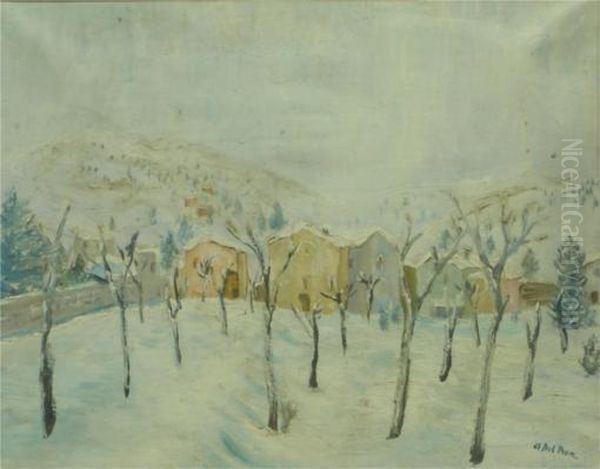
Beyond these specific names, Del Bon's work can be situated within the broader context of late nineteenth and early twentieth-century Lombard painting, which included notable figures like Filippo Carcano (1840-1914) and Mosè Bianchi (1840-1904), known for their contributions to landscape and genre painting. While perhaps not direct influences in the same way as Ranzoni or Gola, their work formed part of the artistic milieu from which Del Bon emerged. Furthermore, while distinct from French Impressionism, Del Bon's focus on capturing light effects in nature inevitably invites comparison with the aims, if not the techniques, of artists like Claude Monet (1840-1926) or Camille Pissarro (1830-1903).
Subjects of Intimacy: Landscapes and Still Lifes
Landscapes formed the core of Angelo Del Bon's oeuvre. He was drawn to the scenery of his native Lombardy, repeatedly painting views of Lake Como and Lake Maggiore, the rolling hills near Castiglione, and the quiet charm of rural villages. His landscapes often possess an intimate, almost contemplative quality. He depicted familiar scenes – a country road, a farmhouse, a village under snow – with a sensitivity that elevates them beyond mere topography. Works like Lago di Como (Lake Como), Colline di Castiglione (Hills of Castiglione), Paese sotto la neve (Village under Snow), and Casa gialla (Yellow House) exemplify his dedication to this genre.
His travels also took him to other parts of Italy, resulting in works such as Lavagna, depicting the Ligurian coastal town, and the evocative Paesaggio di Sant'Andrea di Torbole (Landscape of Sant'Andrea di Torbole), painted around 1950. This latter work, an oil on canvas measuring 40 x 70 cm and signed in the lower right, is considered a representative example of his mature landscape style, showcasing his characteristic light and fluid brushwork.
Still life, particularly floral subjects, was another important genre for Del Bon. He approached flowers with the same sensitivity he brought to landscapes. Works such as Fiori in vaso giallo (Flowers in a Yellow Vase, 1950), Fiori in vaso viola (Flowers in a Purple Vase), Fiori in vaso (Flowers in a Vase), and Ortensie (Hydrangeas) demonstrate his skill in capturing the delicate forms, textures, and colours of blooms. These are not just decorative arrangements; they often convey a quiet intensity and a deep appreciation for the transient beauty of nature, rendered with his signature clarity of light and expressive touch.
Del Bon also explored the human figure, notably in works like the 1933 painting Nudo sulla pelle di leone (Nude on a Lion Skin). While perhaps less central to his output than landscapes or still lifes, such works demonstrate his versatility and his ability to apply his stylistic concerns – the interplay of light, form, and texture – to different subjects, showcasing his mastery of detail and colour within the context of figure painting.
Navigating the Twentieth Century: Del Bon's Position
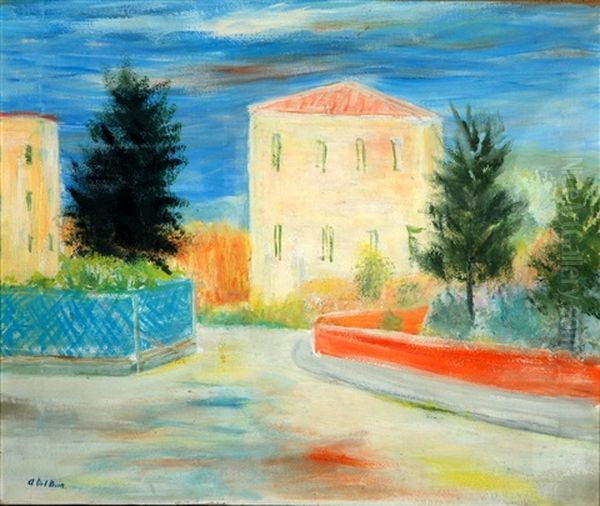
Angelo Del Bon's career spanned a period of significant upheaval and change in Italian art. While he remained rooted in his Lombard influences, his work existed alongside major national movements like the Novecento Italiano. Founded in Milan in the 1920s and championed by figures like Margherita Sarfatti, the Novecento group advocated for a "return to order" after the pre-war avant-gardes. Artists associated with this movement, such as Mario Sironi (1885-1961), Achille Funi (1890-1972), and Anselmo Bucci (1887-1955), often favoured solid forms, classical compositions, and monumental themes, drawing inspiration from Italian Renaissance masters.
Del Bon's style, with its emphasis on light, atmosphere, and intimate subjects, stood in contrast to the often severe and classicizing tendencies of the Novecento. His approach was more personal, lyrical, and tied to the observational traditions of the nineteenth century, albeit filtered through his modern sensibility.
Later, in the late 1930s and 1940s, the Corrente group emerged, also based in Milan. This younger generation of artists, including Renato Birolli (1905-1959), Renato Guttuso (1911-1987), and Ernesto Treccani (1920-2009), reacted against the perceived formalism of the Novecento and the cultural constraints of the Fascist regime. They embraced more expressive, sometimes politically charged styles, drawing inspiration from figures like Van Gogh and Picasso. While Del Bon was not formally part of Corrente, his independent path and focus on personal expression might be seen as sharing a certain anti-formalist spirit, though his artistic language remained distinct – less overtly expressionistic and more rooted in a lyrical interpretation of reality.
His work can also be considered alongside other significant Italian painters of the period who pursued individual paths, such as the master of contemplative still life, Giorgio Morandi (1890-1964), or Carlo Carrà (1881-1966), who moved from Futurism through Metaphysical painting to a later phase focused on landscapes imbued with a sense of archaic solidity. Del Bon's contribution lies in his consistent dedication to his own vision, refining his exploration of light and landscape within the Lombard tradition.
Later Life and Legacy
Angelo Del Bon continued to paint actively through the 1930s, 1940s, and into the early 1950s, remaining dedicated to his preferred subjects and refining his distinctive style. His works from this later period maintain the freshness and sensitivity that characterized his earlier output. He passed away in Desio, near Milan, in 1952, leaving behind a substantial body of work.
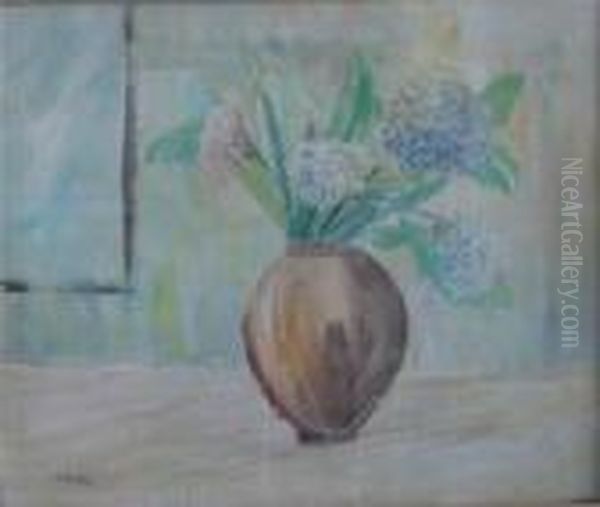
Today, Angelo Del Bon is recognized as an important voice in twentieth-century Italian painting. His work is appreciated for its technical skill, its poetic sensitivity, and its unique synthesis of nineteenth-century Lombard influences and a modern approach to light and colour. He occupies a distinct place, separate from the dominant movements of his time but deeply connected to the artistic traditions of his region. His paintings continue to be sought after in the art market, attesting to their enduring appeal.
While his life seems not to have been marked by major public controversies or widely known anecdotes, the quiet intensity and consistent quality of his art speak for themselves. He was an artist dedicated to capturing the beauty he found in the world around him – the play of light on water, the changing seasons in the landscape, the simple elegance of flowers in a vase. Through his "unconventional lines" and "clear light," Angelo Del Bon created a body of work that continues to resonate with viewers through its intimacy, lyricism, and profound connection to the visual poetry of nature. He remains a testament to the enduring power of personal vision within the broader sweep of art history.